Interior openings in Dachau gas chamberAfter Dachau was liberated on April 29, 1945, a team of U. S. Seventh Army officers investigated the camp for two days before releasing their official report which stated that the gas was introduced into the gas chambers at Dachau through shower heads suspended from the ceiling of the shower room in Baracke X, the crematory building. It was only later learned that the gas was in the form of pellets which were poured into the gas chamber through two openings on the east wall, which are shown in the photo below. 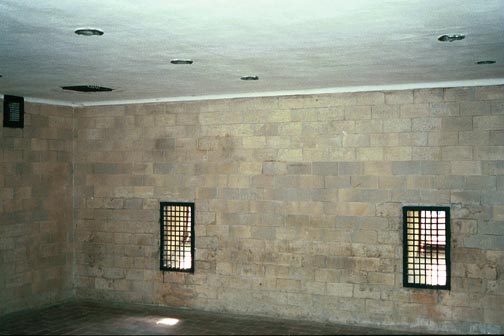 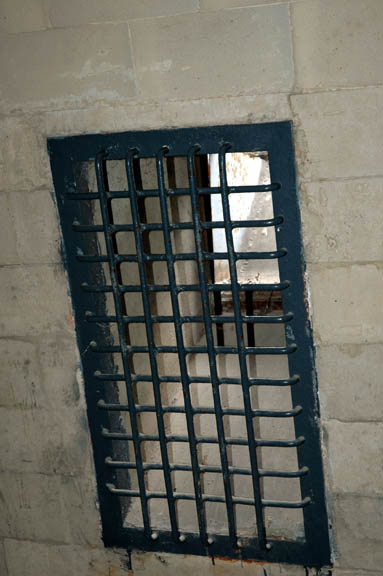 In the first photograph above, you are looking at the interior of the east wall, which is the wall on the front of the building. The second photo is a close-up of the opening on the left. The information about the two wall openings, which is given in the display in the undressing room next to the gas chamber, is as follows: "Vents - flaps where prussic acid poison pellets could be inserted from the outside." (The text of the display reads as though it were written by a lawyer. It seems to have been written to satisfy both the doubters and the believers.) The openings for the "poison pellets," shown in the photograph above, are approximately 16 by 28 inches in size. Behind these grates are two bins on the outside wall which could be opened in order to pour the pellets onto the floor of the gas chamber. The grated openings are less than two feet above the floor and two of the 6 floor drains are about 4 feet from the openings. The manufacturer's guidelines for the use of Zyklon-B cautioned users that the pellets should be put back into the can, after gassing was complete, and returned for recycling, not swept down a drain. 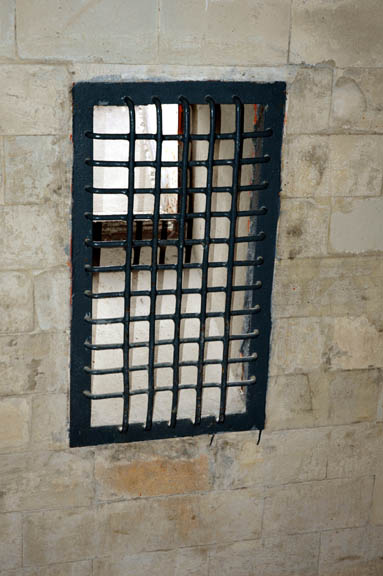 In the descriptions of the gas chamber given by the American soldiers who saw it in the first few days after liberation, it was universally stated that the gas was dispensed through the shower heads. None of the liberators, who saw the gas chamber in the first few days, mentioned the openings on the interior east wall where the Zyklon-B gas pellets were poured onto the floor through the two bins on the outside. The prisoners who escorted the American soldiers through the gas chamber always pointed out the peephole on the rear wall, but none of the soldiers were directed to look behind them at the front wall where the two opening for the gas bins were located. None of the American soldiers who saw the homicidal gas chamber immediately after the liberation knew that the gas that was used was not liquid or invisible vapor, but rather was in the form of Zyklon-B pellets that are about the size of peas. The Nazis used Zyklon-B pellets in both the disinfection gas chambers for killing lice to prevent disease and in their homicidal gas chambers for murdering people. The following quote is from "The Harrowing of Hell" written by Captain Marcus J. Smith, a US Army medical doctor with DP Team 115 who arrived at Dachau on April 30, 1945: "They stood beneath innocent-looking shower heads, evenly spaced on the ceiling; from them the invisible lethal gas (carbon monoxide and hydrogen cyanide) flowed for ten to twenty minutes. I noticed a thick glass window on the rear of the chamber: I am told that through the window a supervisor witnessed the executions so that he could decontaminate when they were over." Contrary to the description above, written by a medical doctor with the US Army, the holes for the fake shower heads, that were set flush with the concrete ceiling, were not "evenly spaced." There are three rows of these ceiling holes. On the north side of the ceiling, there are three holes on the left side, then two ceiling vents with one hole between them on the right side. In the middle row, there are 6 holes and in the row near the south wall, there are 5 holes, making a total of 15 randomly-spaced holes for the fake shower nozzles.  The one remaining shower head in the Dachau gas chamber is made of sheet metal and looks like the head from a large garden sprinkler can. It is approximately five inches in diameter, and is set flush with the ceiling in a hole that is about 4 or 5 inches deep into the ceiling. By looking into the empty holes on the ceiling, one can see that these fake shower heads were not connected to any pipes. As you can see, the one remaining shower head has been dented, as though someone had punched it with his fist. The following is a quote from a report by the US Seventh Army: "GAS CHAMBERS: the internees who were brought to Camp Dachau for the sole purpose of being executed were in most cases Jews and Russians. They were brought into the compound, lined up near the gas chambers, and were screened in a similar manner as internees who came to Dachau for imprisonment. Then they were marched to a room and told to undress. Everyone was given a towel and a piece of soap, as though they were about to take a shower. During this whole screening process, no hint was ever given that they were to be executed, for the routine was similar upon the arrival of all internees at the camp. Then they entered the gas chamber. Over the entrance, in large black letters, was written "Brause Bad" (showers). There were about 15 shower faucets suspended from the ceiling from which gas was then released. There was one large chamber, capacity of which was 200, and five smaller gas chambers, capacity of each being 50. It took approximately 10 minutes for the execution. From the gas chamber, the door led to the Krematory to which the bodies were removed by internees who were selected for the job. The dead bodies were then placed in 5 furnaces, two or three bodies at a time." From a report by OSS Section, US Seventh Army, entitled Dachau Concentration Camp, Foreword by Col. William W. Quinn, 1945 Contrary to the official US Seventh Army report, which is quoted above, the poison gas which was used to kill the Jews and the Russians, could not have come through the "shower faucets" in the gas chamber. The one shower nozzle, which can be seen in the gas chamber today, is not "suspended from the ceiling" and it is not connected to any pipe. The photo below, taken in the Mauthausen gas chamber, shows a shower faucet "suspended from the ceiling," as Col. William W. Quinn described in his report on Dachau. The shower faucets in the Dachau gas chamber are not suspended from pipes; they are just stuck into the ceiling and not connected to pipes. 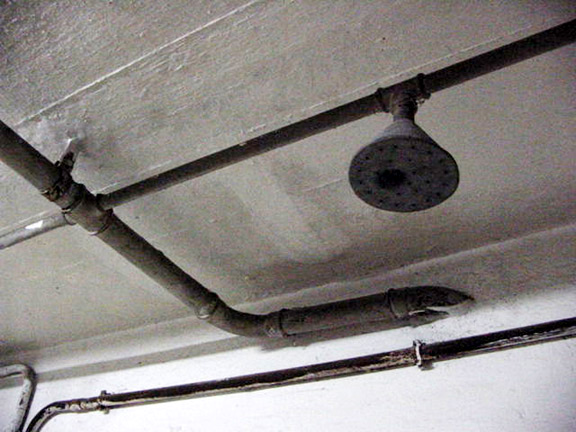 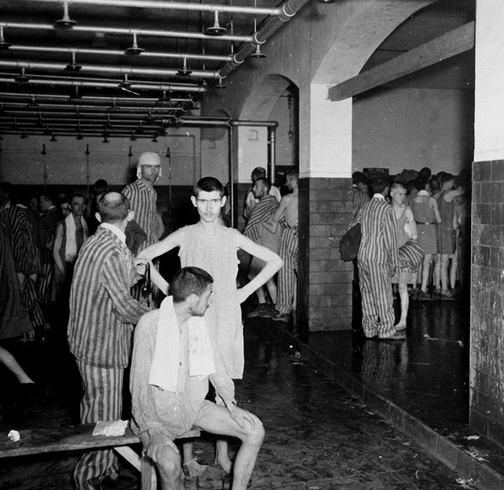 The old photo above shows the large shower room in the service building at Dachau. Note the pipes on the ceiling from which the shower heads are suspended. The former shower room can be seen today in the Dachau Museum, although the pipes have been removed. Interior of Gas Chamber, continuedPreviousExterior of Gas ChamberDisinfection Gas ChambersBack to Table of ContentsHomeThis page was last updated on March 9, 2008
|